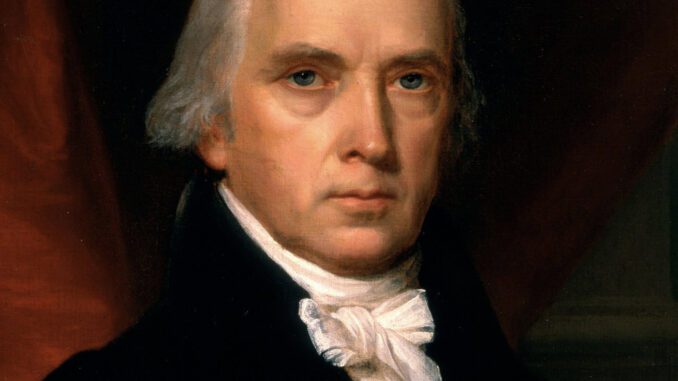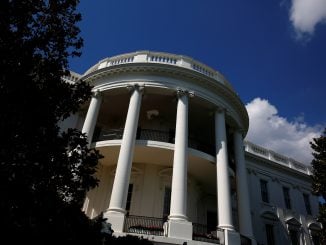
There has never been a time when our nation wasn’t divided by partisanship. Yet some eras are more divisive than others, and few of us would deny that we’re living through an especially polarized time. For those who don’t trust their instincts on this question, numerous surveys bear out a collective hunch: polarization really has gotten worse in recent decades.
We don’t lack for probing examinations of the causes. Ezra Klein blames modern social and news media. Charles Murray notes that ordinary class divisions have become intensified through American “super zips.” Some studies blame the nationalization of local politics, while others suggest that even our leisure activities are exacerbating political divides. Predictably, each side blames the other for increased radicalization within their respective political parties.
While many of these studies provide genuine insights into our current condition and how we got here, too few have grappled seriously with the most pressing question: How do we get beyond the hyper-partisanship?
Lessons drawn from our preeminent constitutional founder James Madison might prove helpful.
Madison not only lived through one of the worst epochs of American partisanship but also helped lead the country past that unruly epoch and into greater harmony.
At first blush, Madison might seem like an unlikely Sherpa to guide us on this quest. In the first place, his most famous argument, found in Federalist Number 10, teaches that “the latent causes of faction” are not situational but are rather “sown in the nature of man.” Since a factious tendency in free governments cannot be overcome, he says, we must accept “the spirit of party and faction in the necessary and ordinary operations of the government.”
In the second place, Madison played no small role in establishing the first organized political party in the young republic. He first coined the phrase, the “Republican Party,” and while serving as apparatchik for the Jeffersonian Republicans, he often succumbed to the same partisan fervor we complain about today.
Yet Madison remains a valuable object lesson for these very reasons. First, it is precisely because he knew that factions could not be removed from free government that he actively sought ways to defang them to render them less destructive. Second, it is not Madison’s most partisan activities that teach us how to get beyond polarization, but rather the arc of his whole life and career. Madison’s earlier operations were one reason why the 1790s have been characterized as a “decade-long shouting match.” Yet he retired from the presidency in 1817 in what was widely regarded as an “era of good feelings.”
In other words, Madison not only lived through one of the worst epochs of American partisanship but also helped lead the country past that unruly epoch and into greater harmony. That’s why his lessons are worth examining today.
Madison’s earlier operations were one reason why the 1790s have been characterized as a “decade-long shouting match.” Yet he retired from the presidency in 1817 in what was widely regarded as an “era of good feelings.”
Lesson 1: Teach Classical Rhetoric to America’s Youth.
Some polls indicate that support for free speech is declining in America, especially among the young. Such polls tend to gauge young people’s tolerance for speakers they find offensive. But if today’s students believe that protecting “hate speech” (whatever that means) is the only purpose of the First Amendment, we shouldn’t wonder or even blame them if their support for free speech erodes. It’s not a bad sign that they prefer civility to barbarism.
The greater “free speech” scandal is the one that nobody talks about: most colleges and universities aren’t teaching their students the purpose of free speech. Even college graduates have never been taught that the point of tolerating clashing opinions is the pursuit of truth. For too many, their expensive educations have kept them ignorant of the rational arts of political persuasion. They are taught to assume that all judgments are subjective and can’t be held to rational evaluation, discussion, and debate.
It wasn’t so long ago that an education in classical rhetoric was deemed an essential part of enlightened self-government. When Madison attended Princeton, he heard lectures on “Moral Philosophy, Rhetoric, and Eloquence” from none other than John Witherspoon.
Madison’s interest in the subject outlasted his college days. In 1784, he ordered a copy of Hugh Blair’s popular Lectures on Rhetoric and Belles Lettres. “True rhetoric and sound logic are very nearly allied,” argued Blair. The proper study of rhetoric is much more than the artistic arrangement of words; it “teaches to think as well as to speak accurately.”
It’s not fair to castigate today’s students as “snowflakes;” they’ve never been taught a better alternative to disinviting, protesting or shouting down campus speakers who challenge their presuppositions. If the standard curriculum included classical rhetoric, they would be equipped to engage logically with speakers expressing diverse viewpoints — to discover for themselves whether their visitor was a sophist or a Socrates, or something in-between. Even better, their taste in speakers might become too refined for the most inane of the campus rabble-rousers.
Lynn Uzzell teaches American politics and rhetoric at the University of Virginia and Washington and Lee University. For four years she was also the scholar in residence at the Center for the Constitution at James Madison’s Montpelier. She specializes in the Constitutional Convention of 1787 and the political thought of James Madison.
This essay is part of RealClearPublicAffairs’s 1776 Series, which explains the major themes that define the American mind. It is the first installment of a three-part series in the North State Journal. Republished with attribution.


